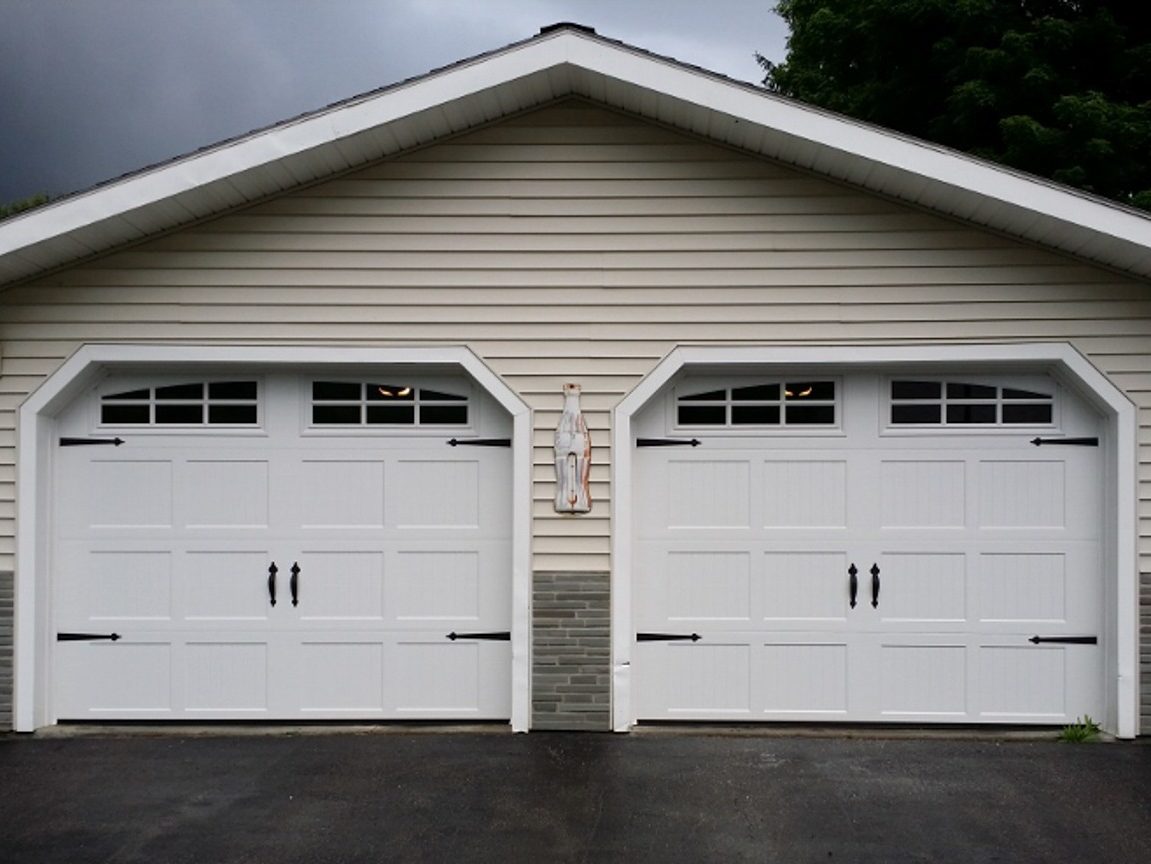Updated on August 26, 2022 9:18 am
Choosing the Style


When considering styles of garage doors, try to take the overall appearance of your house and surrounding areas into consideration. In the past, this was difficult to do for those who are less visual in their imagination, but that’s not the case today! We can take a picture of your home and then show you what your house would look like if you choose specific models, colors, and options.
Choosing a Door That Will Last a Long Time
As with any consideration, budget comes into play here but while you are spending the money to have your door installed, we suggest you choose a model that will last a long time. Our theory is, “better to buy a good door and pay for installation once than to buy a cheap door and need to buy a door and installation twice.” That being said, just because one door costs more than another does not necessarily mean it will last longer.
Spring Type
We recommend going with torsion springs rather than extension springs. With torsion springs, both sides of the door are connected to one counterbalance assembly so that if one side goes up or down, the other side of the door will go up or down with it, thus the door will not bend or get out of alignment nearly as easily.
Spring Rating
The industry standard is 10,000 cycles minimum. Depending on the expected frequency of use, we recommend going with higher cycle springs such as 20,000 or in some high-use applications, even as much as 50,000 or 100,000 cycles.
Roller Type
Nylon steel ball-bearing rollers on a door that is correctly installed make for a door that runs quietly and smoothly while lasting a long time. Steel 10 ball-bearing rollers will also be quite durable but make for a noisier door. Nylon on steel rollers with no ball bearing will result in a quieter operating door but will have a shorter life, especially on heavier doors.
Insulation Type
Insulation type has an effect on not only the insulation value of your door, but also plays into the picture of how rigid your door panel will be. Polyurethane insulation is much denser than polystyrene. It is foamed in place and sticks to the steel skins of the door, giving the door strength and rigidity while providing superior thermal performance.
Steel Thickness
Steel thickness of the panels can be compared, but keep in mind that a polyurethane door will require less steel thickness than a single layer steel door, also called a pan door. Also, remember that the smaller the gauge, the thicker the steel.
Thermal Performance
R-values can be deceiving! It is important to consider more than just the insulation or calculated R-value of a door. Since doors are marketed by calculated R-value, it is possible for a door with a lower R-value to actually perform better than one with a higher R-value. A door with inside and outside steel skins meeting each other will conduct the temperature around the perimeter of each section. On a cold day in a heated garage, this will result in the door being cold to touch on the sides of the door and in the middle where the sections meet. This will be true even on doors that boast a high R-value! A standard size 9 X 7 four-section garage door has 86 linear feet of section perimeter! If thermal performance is important to you, think again before buying a door solely based on the highest R-value on the market.
Conclusion
There are many factors that fall into play in choosing a good door. Choice Garage Doors can help you choose the door that best meets your needs, compliments your home’s looks, and fits your budget.







